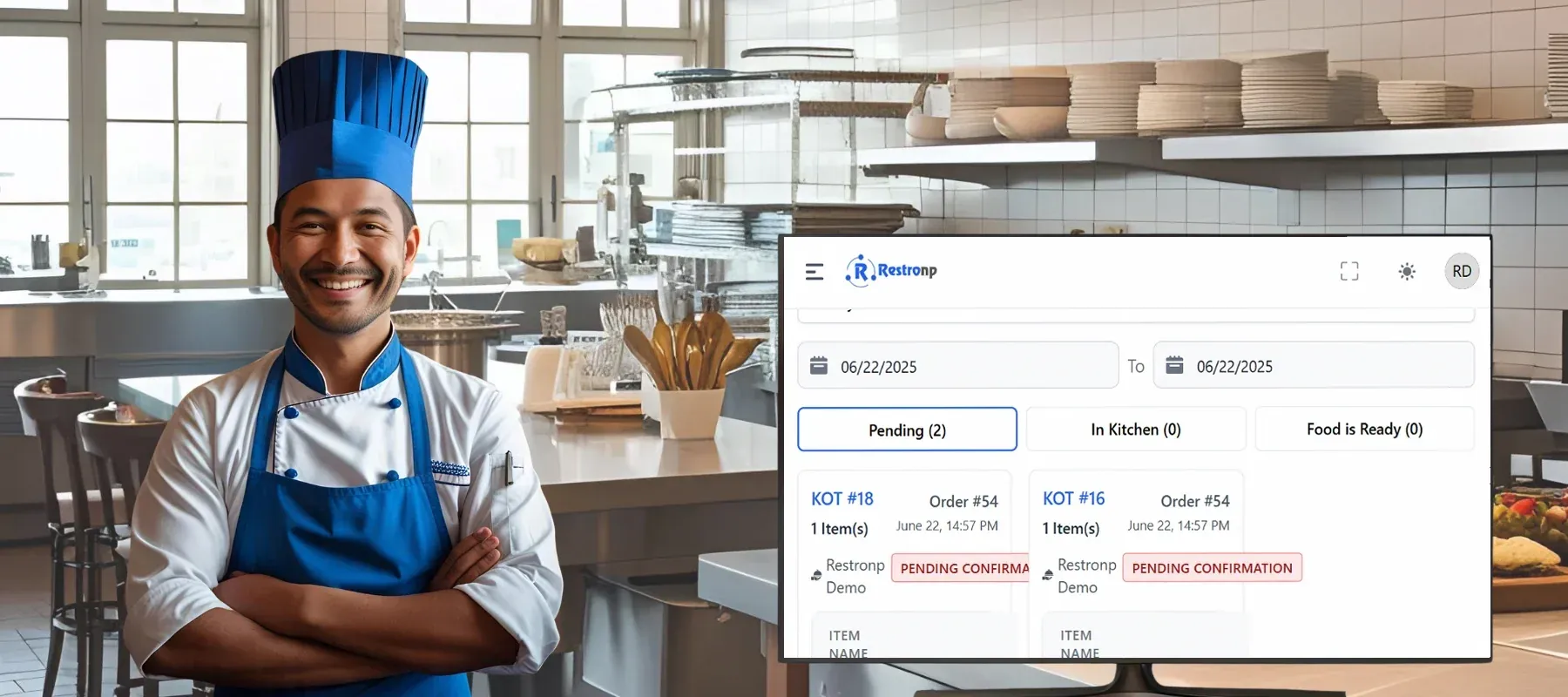Streamlining Kitchen Operations with KOT Systems: A Game Changer for Nepali Eateries

Introduction
In the fast-moving world of
restaurants, speed and accuracy in the kitchen can make or break your
customer’s dining experience. For Nepali eateries—whether a small momo stall or
a multi-branch restaurant—efficient communication between waitstaff and kitchen
is critical to delivering great service.
Traditional methods using handwritten order slips or verbal communication often lead to mistakes, delays, and frustration. This is where Kitchen Order Ticket (KOT) systems step in as a transformative technology.
KOT systems digitize the
order-taking process, sending customer requests instantly and clearly from the
front of house directly to the kitchen. This simple shift improves order accuracy,
speeds up preparation, and streamlines your entire kitchen operation.
In this article, we’ll explore why
KOT systems are becoming essential for Nepali eateries, the benefits they
bring, and what features to look for when choosing the right solution for your
restaurant.
What
is a KOT System?
A Kitchen Order Ticket (KOT)
system is a digital tool that replaces paper order slips. Instead of
waiters writing down customer orders on paper and physically handing them to
the kitchen, they enter orders into a digital device—such as a tablet or POS
terminal—which instantly transmits the order details to kitchen display screens
or printers.
Why
Are KOT Systems Vital for Nepali Restaurants?
Nepali restaurants face unique
challenges—from busy lunch rushes in Kathmandu to multi-location management in
tourist hubs. Using a KOT system offers clear Advantages:
- -
Digital orders reach the kitchen immediately, reducing wait times and
allowing kitchens to prepare food faster.
- -
Clear, typed orders eliminate misunderstandings caused by messy
handwriting or miscommunication.
- -
Kitchen staff can see, prioritize, and manage orders more efficiently,
avoiding chaos during peak hours.
- - Quicker, accurate service leads to happier customers
and better reviews.
- - Less food wastage from incorrect orders and reduced paper use.
- -
Managers can track order status and kitchen performance anytime.
How
Does a KOT System Work?
The operation of a KOT system is
straightforward:
- - Order Entry:
Waitstaff input customer orders on a device—like a tablet or POS terminal.
- - Order Transmission:
The order instantly appears on kitchen display screens or prints in
respective kitchen sections (e.g., appetizers, mains).
- - Order Preparation:
Kitchen staff mark orders as received, in progress, and ready to serve,
ensuring smooth communication.
- - Integration:
KOT systems often sync with billing, inventory, and reporting software for
seamless restaurant management.
Features
to Look for in a KOT System for Your Nepali Eatery
When selecting a KOT system,
consider these must-have features:
- - Easy for your waiters and kitchen staff to use, with
minimal training required.
- - Supports Nepali cuisine’s many customizations like
spice levels and ingredient changes.
- - Automatically sends orders to correct kitchen
sections.
- - Waiters and managers can monitor progress instantly.
- - Functions without internet and syncs data when back online—important in
areas with unstable connections.
- - Nepali or bilingual interface to ease adoption by
staff.
- - Connects with your billing system and stock management
for accuracy and efficiency.
In Nepal’s bustling food industry,
the efficiency of your kitchen can set you apart. A Kitchen Order Ticket system
is no longer just an upgrade; it’s a necessity for restaurants aiming to
improve service, reduce errors, and grow sustainably.
If you want to modernize your
kitchen operations and provide your customers with fast, accurate service every
time, implementing a KOT system is the way forward.


